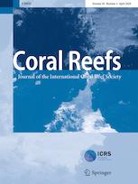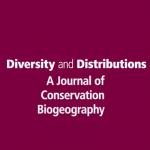Profile
It is becoming increasingly clear that marine flora and fauna respond to, and even exploit, changes in water properties and currents. In the Indian Ocean Region, sharks aggregate over seamounts to exploit increased prey abundance resulting from energetic tidal currents. Additionally, the severity of coral bleaching varies over short distances and with depth, reflecting the influence of upwelling events that cool the coral community in key places throughout the archipelago.
Effective conservation strategies need to incorporate our evolving understanding of how marine organisms respond to these changes in oceanographic conditions as their behaviour often creates hotspots of biodiversity and abundance that are critically important to protect. In the Chagos Archipelago, I am using a variety of observational techniques including heavily instrumented oceanographic moorings, vessel-based acoustic surveys, numerical modelling and satellite-based measurements. I aim to assess the extent to which hotspots of animal abundance, especially for apex predators and manta rays, are driven by energetic ocean currents.
Of particular interest are internal waves which also appear to create pockets of resilience in the coral community by flushing the surface corals with cool water, relieving the thermal stress responsible for bleaching. We will assess whether locations where this flushing happens represent potential ‘coral sanctuaries’ that can sustain the wider coral community in future years as ocean warming increases.
To develop the best possible conservation strategies, we must first understand why these organisms thrive in such dynamic, energetic and constantly evolving environments.
Biography
My Projects
Other interests
In addition to the research I’m undertaking in the Indian Ocean Region, I also study the influence of oceanographic processes, especially internal waves, on coral communities in the Seychelles. Back in the UK, I am investigating how ocean currents impact, and are impacted by, large scale aquaculture developments.
My Publications

Predicting the Distribution of Mesophotic Coral Ecosystems in the Chagos Archipelago
Diaz, C., Howell, K.L., Graves, K.P., Bolton, A., Hosegood, P., Robinson, E., Foster, N.L. (2025). Predicting the Distribution of Mesophotic Coral Ecosystems in the Chagos Archipelago. Ecology and Evolution.

Modulation of the Internal Wave Regime Over a Tropical Seamount Ecosystem by Basin-Scale Oceanographic Processes
Robinson, E., Hosegood, P., Bolton, A. (2024). Modulation of the internal wave regime over a tropical seamount ecosystem by basin-scale oceanographic processes. Progress in Oceanography

Diverse and Ecologically Unique Mesophotic Coral Ecosystems in the Central Indian Ocean
Diaz, C., Howell, K.L., Hosegood, P., Bolton, A., Foster, N.L. (2024). Diverse and ecologically unique mesophotic coral ecosystems in the central Indian Ocean. Coral Reefs.

Spatial and Temporal Variations in Reef Manta Ray (Mobula alfredi) Meso-Scale Habitat Use and the Implications for Conservation
Harris, J.L., Hosegood, P., Embling, C.B., Williamson, B.J., Stevens, G.M. (2024). Spatial and temporal variations in reef manta ray (Mobula alfredi) meso-scale habitat use and the implications for conservation. Aquatic Conservation.

Dynamical Oceanographic Processes Impact on Reef Manta Ray Behaviour: Extreme Indian Ocean Diople Influence on Local Internal Wave Dynamics at a Remote Tropical Atoll
Robinson, E., Hosegood, P., Bolton, A. (2023). Dynamical oceanographic processes impact on reef manta ray behaviour: Extreme Indian Ocean Diople influence on local internal wave dynamics at a remote tropical atoll. Progress in Oceanography.




